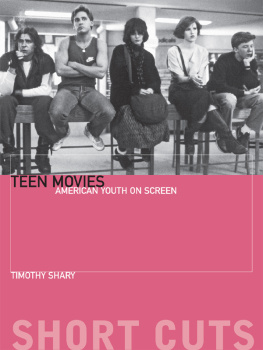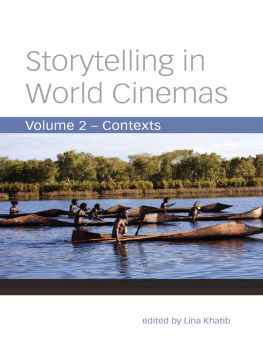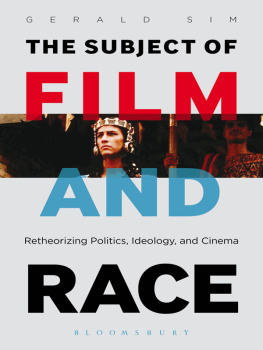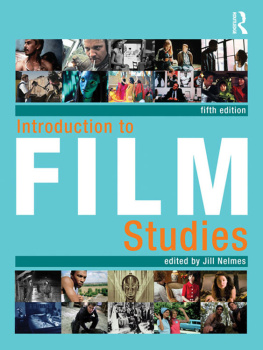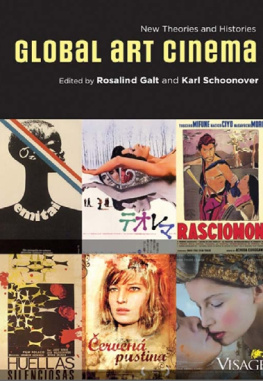Published in 2021 by
Berghahn Books
www.berghahnbooks.com
2021 Berghahn Books
Originally published as two special issues of Boyhood Studies: Volume 8, issue 2 (2015) and Volume 9, issue 1 (2016)
All rights reserved. Except for the quotation of short passages for the purposes of criticism and review, no part of this book may be reproduced in any form or by any means, electronic or mechanical, including photocopying, recording, or any information storage and retrieval system now known or to be invented, without written permission of the publisher.
Library of Congress Cataloging-in-Publication Data
Names: Shary, Timothy, 1967- editor.
Title: Cinemas of boyhood : masculinity, sexuality, nationality / edited by Timothy Shary.
Description: New York : Berghahn, 2021. | Originally published as two special issue of Boyhood Studies: Volume 8, issue 2 (2015) and Volume 9, issue 1 (2016). | Includes bibliographical references and index. |
Identifiers: LCCN 2020049238 | ISBN 9781789209938 (hardback) | ISBN 9781789209945 (paperback) | ISBN 9781789209952 (ebook)
Subjects: LCSH: Boys in motion pictures. | Masculinity in motion pictures.
Classification: LCC PN1995.9.B7 C56 2021 | DDC 791.43083/41--dc23
LC record available at https://lccn.loc.gov/2020049238
British Library Cataloguing in Publication Data
A catalogue record for this book is available from the British Library
ISBN 978-1-78920-993-8 hardback
ISBN 978-1-78920-994-5 paperback
ISBN 978-1-78920-995-2 ebook
Introduction
Timothy Shary

These are profound times to study boyhood in cinema. Even though male characters have undoubtedly dominated cinema roles from the start, boys stories have not been consistently produced or appreciated. Since the publication of Where the Boys Are: Cinemas of Masculinity and Youth, a collection edited by Murray Pomerance and Frances Gateward in 2005, there has been increasing academic interest in boyhood representation through movies, as demonstrated by the chapters collected here. This interest follows the expansive concerns of pop psychology texts at the turn of the century that took up the political and emotional consequences of boys behavior, such as those by Pollack (1999), Kindlon and Thompson (2000), and Sommers (2001). Their research joined the chorus of a prevailing masculinity in crisis theme that has permeated gender studies in recent years: boys have been troubled by the pressures of patriarchy, the demands of feminism, and the culture of capitalism, and thus are in need of rescue and protection from these influences.
This supposed crisis has nonetheless been much less worrisome on screen, where the diverse representations of boyhood concerns are considerably multidimensional. Some boys are clearly challenging gender expectations and confronting masculine roles, while others are trying to age into manhood with less forceful flair. The best example of this latter style was a film aptly titled simply Boyhood (2014), which primarily follows a single child through elementary school to high school graduation, tracing the subtle and even mundane development of a young man who arrives at adulthood with many of the same perplexing questions and embryonic (and still unfulfilled) ambitions he had as a six-year-old. The title may be a bit sweeping or assumptiveafter all, it is the story of only one white, working-class, heterosexual, boy in Texasbut its method and message are universal. Boyhood is a process, not a product; it is amorphous and ambiguous despite being codified through schooling, psychology, and the law.
This book originated in a two-part journal series that I edited for Boyhood Studies, seeking a diversity of perspectives on the broad topic of boyhood in cinema that would reflect the ongoing questioning of how boys have been constructed by movies, particularly within an era that is fraught with confusions and concerns about just who boys are. I was enthused by the number of manuscripts that were proposed, which ranged across historical periods and national cinemas, and offered an exciting dialogue on the complex and multidisciplinary nature of boyhood studies. Some chapters did examine classical Hollywood texts, yet I also appreciated the global breadth that many chapters provided. Further, as I began the selection process, it became clear that many chapters offered potentially paradigm-shifting perspectives on the very definitions of boyhood itself, across time and across cultures.
Both theoretical and historical perspectives on boyhood are taken up by the essays here. In terms of the former, these authors move beyond the Butlerian (1990) thesis of gender as performance and such crisis narratives as those promoted by Faludi (1999) and Edwards (2006), taking on representations of boyhood in the now postfeminist context identified by Tasker and Negra (2007) and Hamad (2014). Boys in the films examined in these chapters confront their sexual desires and upheavals, question the prevailing politics of their milieu, and negotiate the policies of educational and medical systems that privilege not only heteronormativity and gender dogmatism, but often deny the variable and nascent nature of boyhood itself. The study of boys today has entered what is being thought of as the postnormal range, as recently illustrated by the work of Halberstam (2013), Spade (2015), and Reichert (2019), and as recognized by the chapters offered here.
In terms of historical perspectives, these authors consider the past century of cinema, from the silent era of the 1920s to the past decade. To be sure, enormous changes took place over those generations, within the film industry and for the global culture of boys. Just as the addition of sound to film expanded its mediumistic potential, the growth of movie theaters (and later television and home video) expanded the opportunities for audiencesparticularly youthto see representations of their cultures on screen. For boys, the further militarization of young men in the wake of increasingly global wars pressured them to restrain their emotions, while the rise of feminism attempted to educate them about their prejudice and privilege in terms of gender.
The arrangement of the essays thus corresponds to these theoretical and historical interests, first focusing primarily on gender and politics and then moving into cultural and national concerns. The opening chapter by Victoria Cann and Erica Horton makes for a strong start by generating provocative questions about teenage boys sexual torments in genre-bending Hollywood fare such as Superbad


